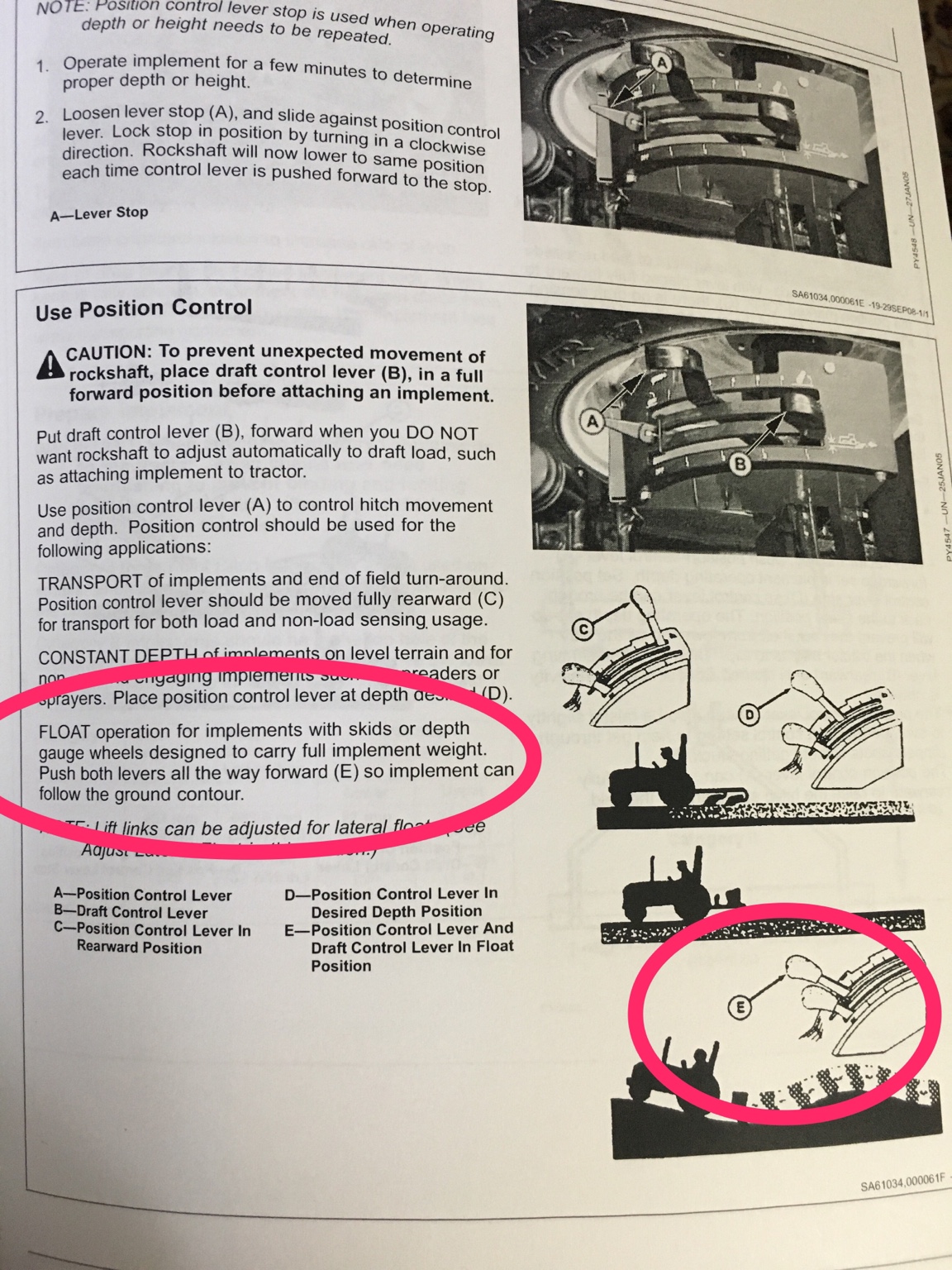I have a lot of experience on various tractors over the years, and I feel like I generally do a pretty good job with my projects whether they be bush hogging, discing, planting, or spraying. One thing I don't fully understand, however, is how to properly use the draft control lever and float setting on the 3 pt hitch.
The tractor in question is a JD 5075E. I have read the manual numerous times, and it sort of makes sense to me, but I'm still not 100%. My understanding is that when using "Ground Engaging Implements," the draft control lever should be engaged (and adjusted to the desired setting). What is a ground engaging implement? I know the obvious ones like plows and discs, but what a about a 3 pt planter?
On top of that, should I use float mode more often than I am? I don't think I've ever used it for anything, but it makes sense to use it for the planter so that it can more accurately follow the contour of the field. My tractor manual says float mode is established by pushing the draft control lever and 3 pt position lever all the way forward. Should I do that then adjust the level of the planter with the center link?
The tractor in question is a JD 5075E. I have read the manual numerous times, and it sort of makes sense to me, but I'm still not 100%. My understanding is that when using "Ground Engaging Implements," the draft control lever should be engaged (and adjusted to the desired setting). What is a ground engaging implement? I know the obvious ones like plows and discs, but what a about a 3 pt planter?
On top of that, should I use float mode more often than I am? I don't think I've ever used it for anything, but it makes sense to use it for the planter so that it can more accurately follow the contour of the field. My tractor manual says float mode is established by pushing the draft control lever and 3 pt position lever all the way forward. Should I do that then adjust the level of the planter with the center link?

